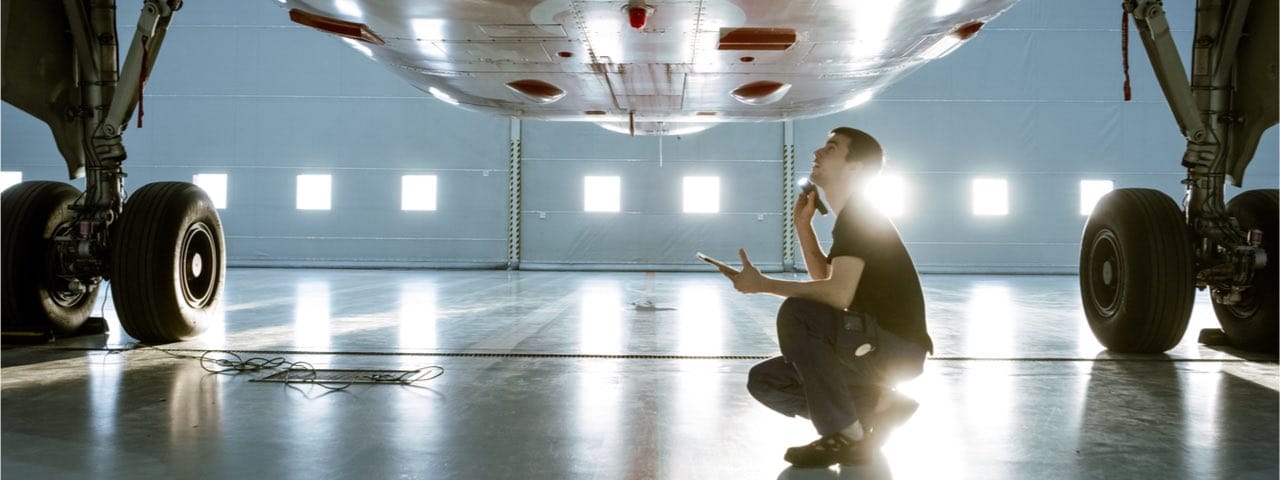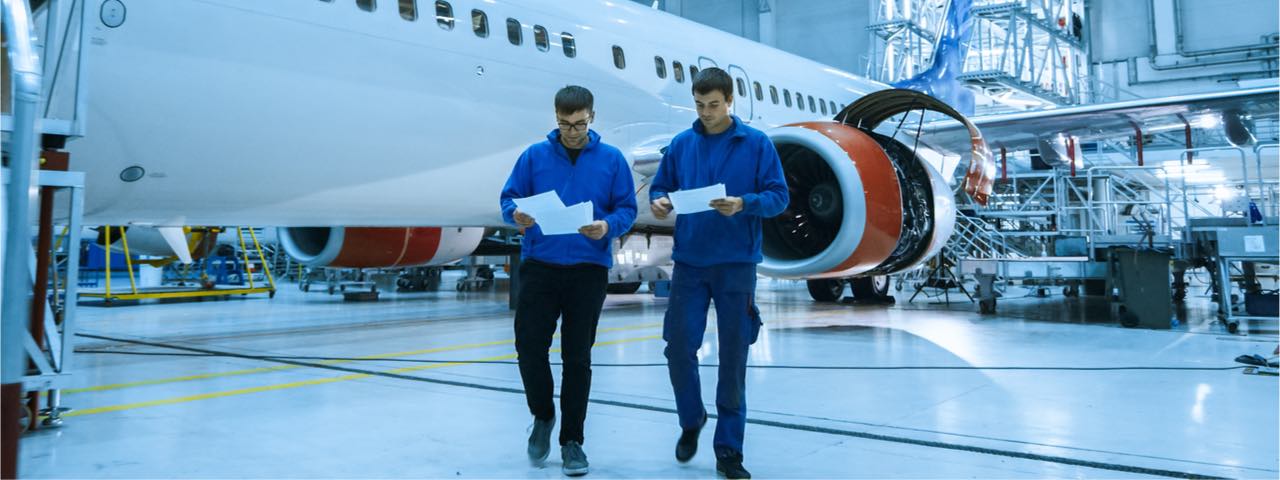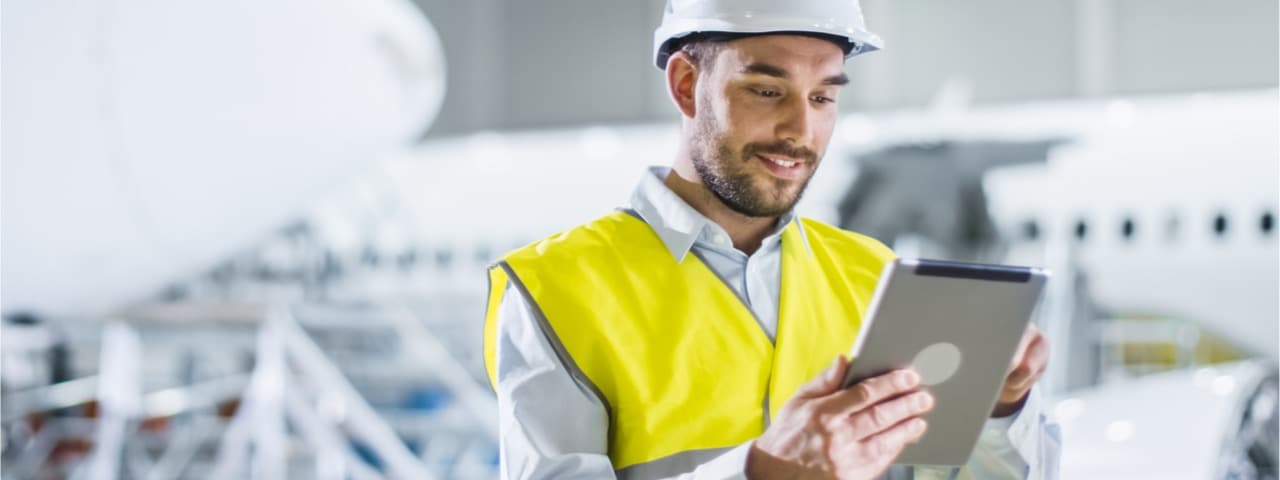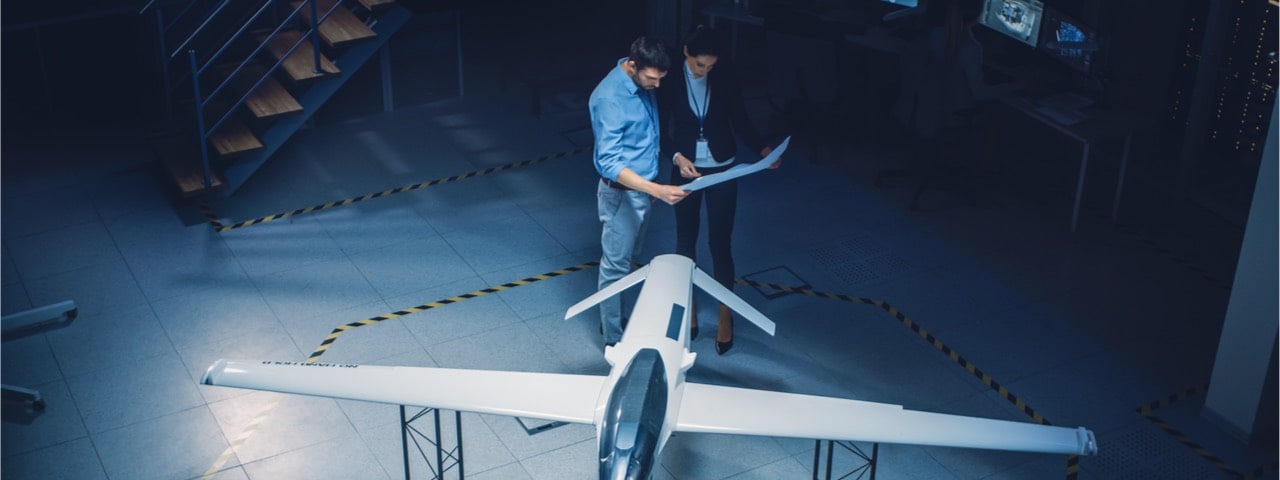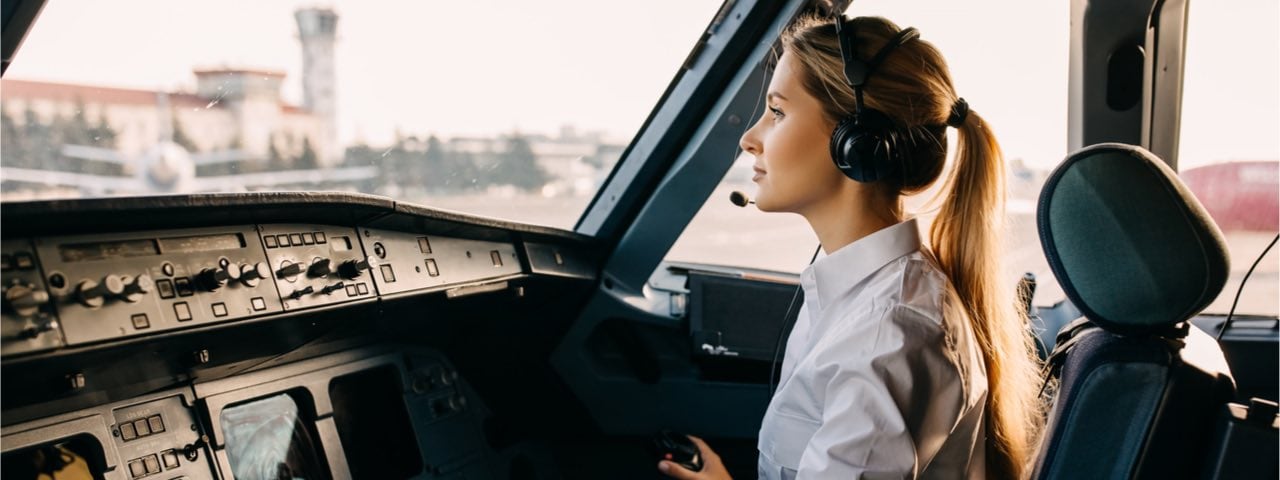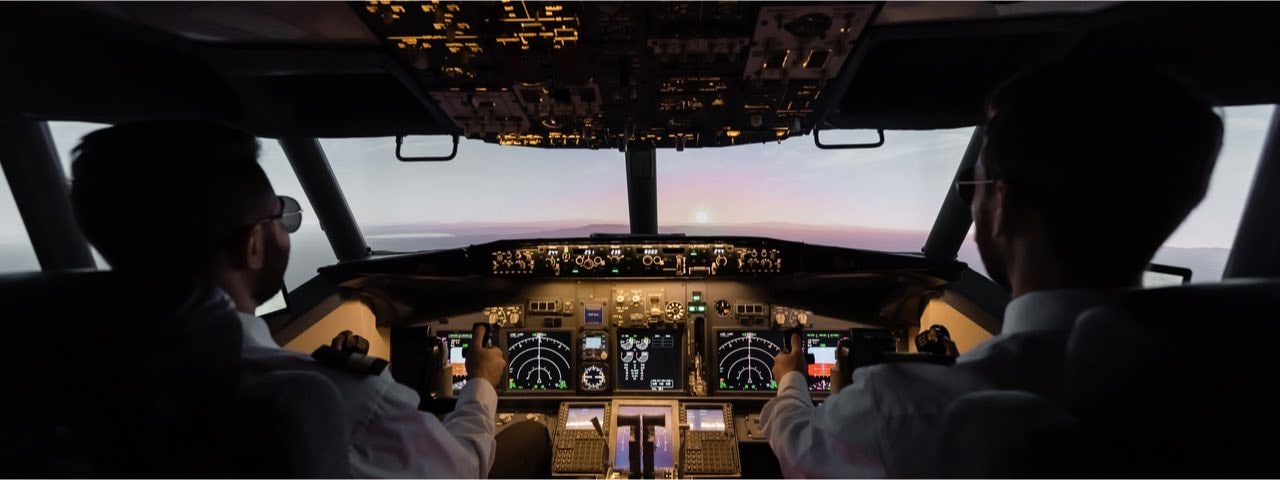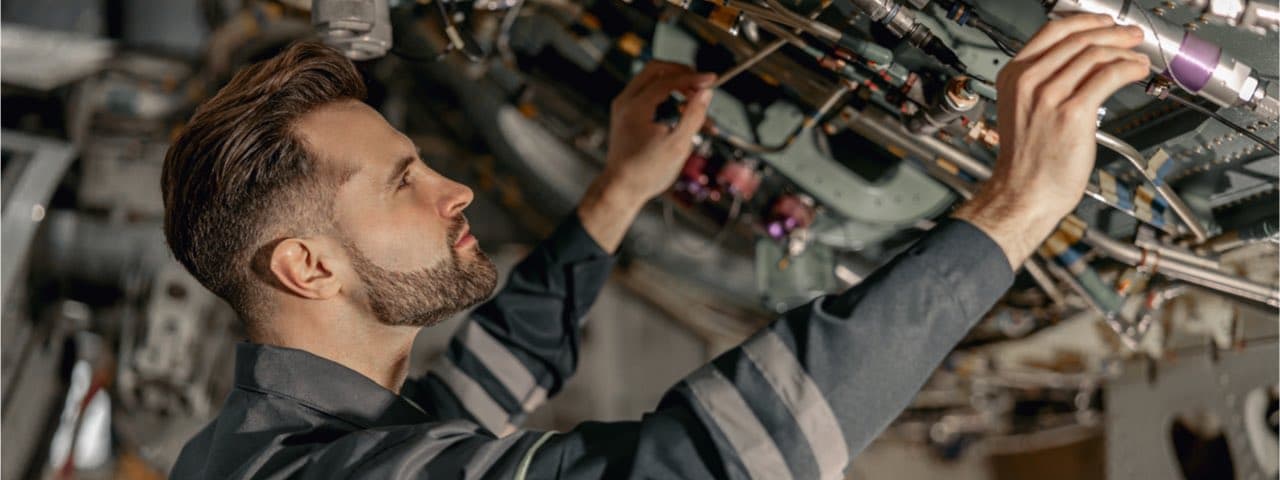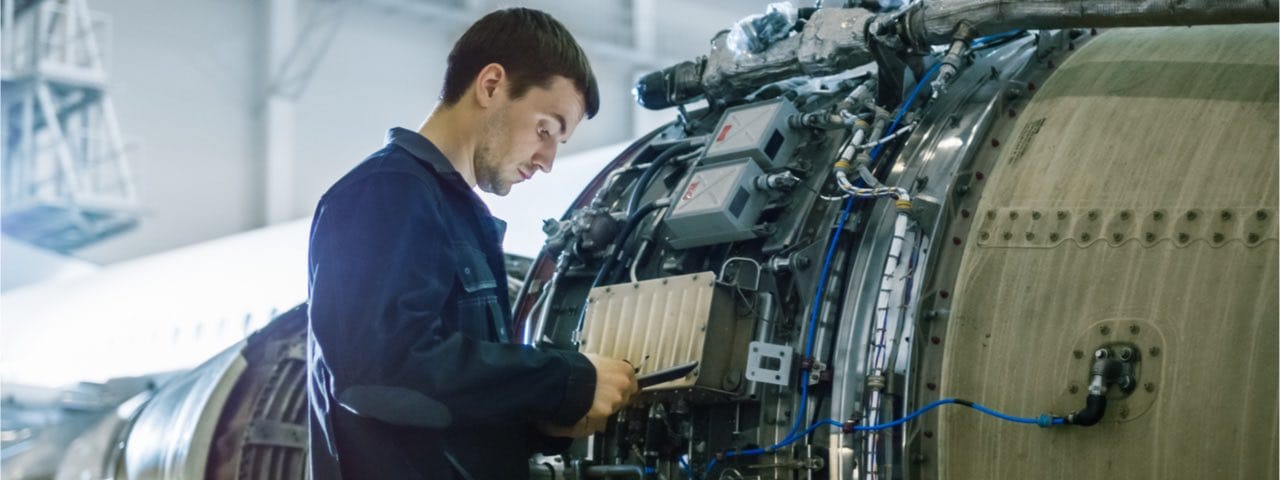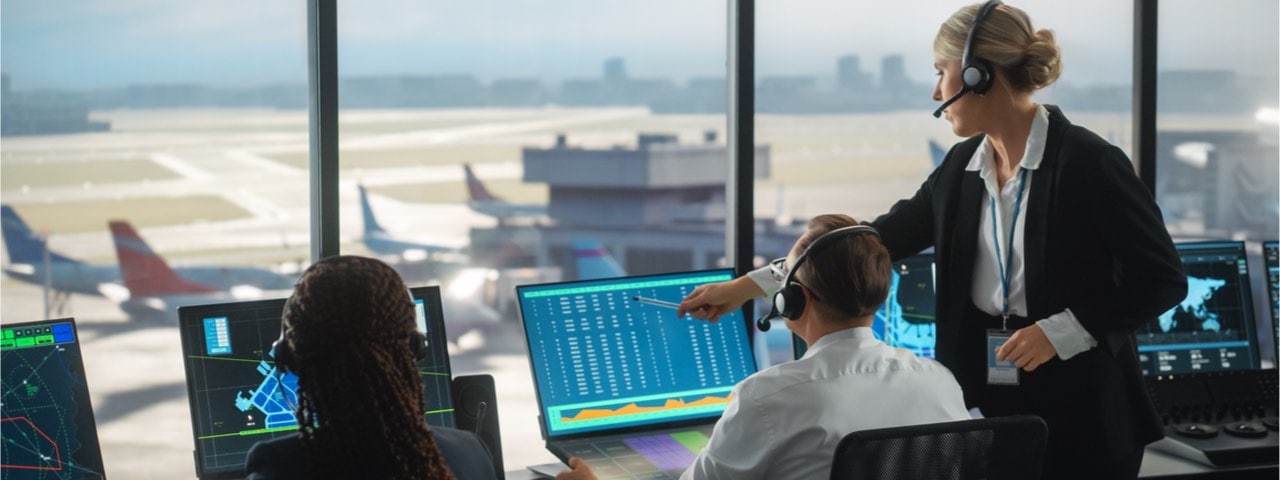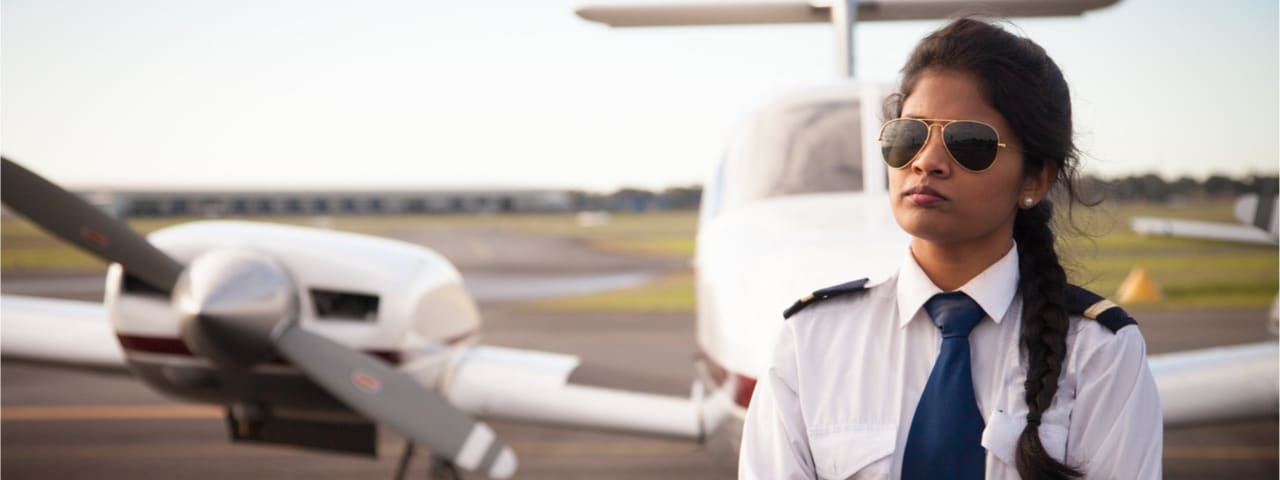Comparative Analysis of 11 Top Canadian Aviation Courses With Information About Schools and their Aviation Degrees

Have you always dreamed of taking to the skies as a commercial airliner or private jet charter pilot, or maybe you love to spend time at airports, are fascinated by how aircraft work or would like to solve the scientific challenges around human flight?
To give you the basic information you need to get started with choosing a career path that’s just right for you, we’ve put together an analysis of the top aviation courses offered at Canadian learning institutions.
Table of contents
Introduction
With the rollout of Covid-19 vaccination programs across the globe, the aviation industry is once again hiring professionals in anticipation of the uptick in air freight and passenger travel. This makes it a good time to gather information about the best aviation courses if you’re thinking about starting a career in this sector. We believe that as the world steps up to the challenges of the pandemic, the aviation industry will once again be the quickest way to travel and transport goods around the world. Here are some of the recent facts about the industry before Covid-19 arrived.
-
Aerospace companies in Canada employed more than 89,000 skilled professionals in 2018.
-
The industry contributed $13.1 billion to Canadian Gross Domestic Product (GDP) in 2018 and 93% of aerospace manufacturing firms were exporters in 2018 (44% higher than the manufacturing average.)
-
Maintenance, repairs and operations activities posted a growth of more than 25%, while manufacturing activity saw a slight contraction between 2012 and 2017.
-
Canada ranks in the top three in the world for civil flight-simulator production, civil aircraft production and civil engine production. Through its global network of over 50 civil aviation training centres, CAE provides aviation and training services to more than 120,000 crew members yearly.
-
Bell Helicopter Textron Canada Limited has manufactured more than 5,000 helicopters in Canada for worldwide distribution. The company specializes in airframe design, product development manufacturing, flight testing, certification, composites, customization, and customer support.
-
Women made up almost 25% of those employed in STEM (science, technology, engineering, and mathematics) occupations – an increase of over 100% between 2012 and 2017.
-
The value of aerospace manufacturing research and development (R&D) totalled $1.4 billion in 2018. In effect, the aerospace manufacturing industry contributed almost 25% of total manufacturing R&D in Canada – seven times the R&D of the manufacturing average.
-
Canada has 600 licensed air carriers and was ranked 12th in the world in terms of quality air transport infrastructure in air traffic.
-
In 2017, the combined flight hours of Canadian airlines were just over 2.1 million hours, with 149.6 million air passengers enplaned and deplaned in Canada. The number of domestic passengers is expected to reach about 51 million by 2035.
-
Pre-pandemic stats recorded 556,917 aircraft take-offs and landings at 90 Canadian airports in June 2019 alone, compared to 549,294 movements at 91 airports in June 2018.
As the aviation sector recovers, post Covid-19, industry growth will begin to show signs of recovery, offering promising job prospects for pilots and flight attendants, aerospace engineers, aircraft maintenance engineers, air traffic controllers and airport operations specialists. Pre-pandemic, it was estimated that 55,000 people would need to be hired by 2025 to keep pace with projected industry growth and to replace workers going into retirement or those leaving the workforce for other reasons.
Keeping in mind that a bachelor’s degree is a financial commitment and can take as many as four years to complete, it’s important to choose the best educational institution for your studies.
This comparative analysis of a cross-section of 11 Canadian aviation/aeronautics universities and colleges will give you key information and insights into the courses available to students. The report is in three sections: a brief history of aviation education in Canada; additional information for each university’s courses; and perspectives on the future of aviation and how this will affect aviation and aeronautics training in years to come.
Please note: As a result of the pandemic, there have been a number of changes to university and college programs. We’d recommend visiting the relevant institutions’ websites for altered semester dates, 2021/2 program-delivery information, vaccination procedures and what you can expect on campus.
Summary of the top aviation courses at Canadian universities and colleges
-
Of the 11 institutions surveyed, 5 offered degrees at bachelor level, 5 provided graduate degree programs, while 7 offered diplomas and 4 offered certificate courses. Two- and three-year diplomas are a popular choice among students who need to limit their time spent in the classroom. Diplomas allow the individual to enter the workforce in half the time it would take to complete a bachelor’s degree, relieving some of the financial burden of study.
-
Introductory courses to various aspects of aviation are increasingly popular. These courses allow individuals to decide whether they’d really like to pursue a career in the sector, and for those already working in the industry, the courses allow them to advance their careers.
-
Despite the differences between various universities’ and colleges’ aviation and aeronautical courses, all tend to offer similar resources to their students, from aircraft fleets and flying clubs for those who want to learn how to become a pilot, to flight and engine simulators, and labs that are equipped with the latest technologies to meet industry needs.
History of aviation and training in Canada
-
Aviation education and pilot training began as a stand-alone specialty area soon after the first successful powered flights in the early part of the 20th century. The Wright brothers’ success would not have been possible without the previous efforts of people like Louis Anselm Lauriat, who made the first manned flight in his balloon, Star of the East, at Saint John, New Brunswick, Canada in 1840.
-
Experimental aviation began in Canada with the test flights in 1909 of the Silver Dart – the result of an early aircraft built by a Canadian/US team. The plane, piloted by one of its designers, John McCurdy, was flown off the ice of Baddeck Bay in northeastern Nova Scotia, making it the first controlled powered flight in Canada.
-
The experimental phase of aviation was put on hold during the First and Second World Wars as aviation training entered the mainstream, born out of a need to prepare as many pilots as possible for combat. During this time, many Canadians received training in the British Royal Flying Corps and Royal Air Force (RAF).
-
During the Second World War, the University of Toronto developed the G-suit, a life-saving garment used by Allied fighter plane pilots and later by astronauts.
-
Following the war, Canadians who had served with the RAF used their aviation skills to explore and develop Canada’s North and gather data on the country’s natural resources.
-
The rapid technological advances of the last world war placed the Canadian industry at the forefront of aircraft manufacture (about 100,000 Commonwealth aircrew were trained using Canadian airspace and facilities) and many small Canadian airlines were founded to meet the growing demand for passenger and air freight traffic.
-
The first official Assembly of the International Civil Aviation Organization was held in Montreal in May 1947. The organization’s headquarters remain to this day in the city.
-
Roberta Bondar became Canada’s first female astronaut when she flew on the NASA Space Shuttle Discovery during Mission STS-42, from January 22 to 30, 1992. Bondar received her tertiary education at the University of Toronto.
-
Julie Payette completed two spaceflights and logged more than 25 days in space around the turn of the millennium. She also served as chief astronaut for the Canadian Space Agency and as capsule communicator at the NASA Mission Control Center in Houston, Texas. Payette completed a Bachelor of Engineering degree in electrical engineering at McGill University, Montreal in 1986, and completed a Master of Applied Science degree in computer engineering at the University of Toronto in 1990.
Aviation courses at universities and colleges in Canada
British Columbia Institute of Technology offers 4 diplomas and 2 certificates in aviation and aeronautics
British Columbia Institute of Technology’s (BCIT) Aerospace facility, part of its School of Transportation based in Burnaby, BC, has provided the aviation industry with more than 5,000 graduates in the past 50 years. BCIT offers four accredited Diplomas and two Certificate courses in aviation and aeronautics, as well as ongoing professional contract and specialty training to the aerospace industry, along with domestic and international partners.
-
The full-time Aircraft Maintenance Engineer Category “M” (Maintenance) Diploma is taken for 16 continuous months, with short breaks in December and August.
-
The Aviation Maintenance Technician – Avionics Diploma consists of 68 weeks of full-time studies.
-
The full-time Airline and Flight Operations Commercial Pilot Diploma has two options – Fixed Wing and Rotary Wing.
-
The 64-week fixed-wing option combines flight training with industry-focused academic training required to qualify for a Private Pilot Licence (PPL,) Commercial Pilot Licence (CPL,) Multi Engine Rating, and Instrument Flight Rating.
-
The 57-week rotary-wing option brings fixed- and rotary-wing flight training together with industry-focused academic training to provide students with a strong set of aviation industry skills and knowledge through the partnership of BCIT, Pacific Flying Club, and Chinook Helicopters.
-
-
The Airport Operations program can be achieved as either a Diploma or an Associate Certificate. The 16-month Diploma provides students with a comprehensive, interdisciplinary program supported and approved by the aviation industry. The Associate Certificate focuses on technological advancements in airport operations.
-
The Aircraft Gas Turbine/Jet Engine Technician is a 38-week, full-time certificate which prepares students for a demanding career that will require them to be responsible for inspecting and repairing engines in accordance with aviation standards and regulations.
-
The Unmanned Aerial Vehicles (Drones) introductory course takes place over 10 weeks and is offered in an online learning format.
BCIT students are trained at the 26,500sq m Aerospace Technology Campus (ATC) at the gateway to the Vancouver International Airport in Richmond, BC. Students have access to an air traffic control tower and en-route simulators; more than 40 classrooms and “smart” labs with the latest training computers, equipment and wireless technology; a lecture theatre with global teleconferencing capabilities; an integrated research and resource library; labs and classrooms that support new programs in the fields of air traffic management, ambient intelligence and homeland security; and a 3,700sq m hangar at the centre of the campus that houses BCIT’s fleet of light piston, turboprop, corporate and jet transport aircraft including light and medium helicopters.
BCIT is the first training institute in Canada to have an air traffic management laboratory using 3D animation technology that simulates en route and terminal air traffic environments.
Are you one of the aviation greats of tomorrow? Speak to us about applying for a course at your school of choice, and we’ll do our best to offer you some helpful advice. Air Charter Service (ACS,) as a leading private plane charter company, also provides aviation and flying scholarships for many of the best aviation universities in Canada and around the world. Find out more on our Aviation Scholarships and Student Grants page.
University of Waterloo offers 2 undergraduate and 2 graduate degrees in aviation and aeronautics
The University of Waterloo’s (UW) aviation program offers two four-year undergraduate degrees: either a Bachelor of Environmental Studies (BES – Geography and Aviation,) or a Bachelor of Science (BSc – Science and Aviation), in addition to a Commercial Pilot Licence (CPL).
The graduate program offers an Honours Science and Aviation (Earth Sciences Specialization,) and an Honours Science and Aviation (Physics Specialization).
Flight training is carried out at Waterloo Wellington Flight Centre (WWFC,) located at the Region of Waterloo International Airport (IATA code: YKF) in Woolwich, Ontario. Established in 1932, WWFC is considered to be one of the top pilot training schools in Canada and operates a fleet of 24 aircraft that include 17 Cessna, three Diamonds and three twin-engine Piper Seminoles.
UW has a vibrant aviation research program focusing on aviation safety, human factors and education, and modelling and spatial analysis including the use of unmanned aircraft.
Aviation studies at the University of Waterloo are quite new, having been introduced in 2007, but have grown quickly due to the university’s strong offering in the fields of science, environment, geomatics, and technology – many of the essential disciplines that underpin the fields of aviation and aerospace.
If you believe you have what it takes to succeed in a career in aviation, speak to us about applying for a course at your aviation school of your choice, and we’ll do our best to provide some helpful advice. Air Charter Service (ACS) also provides aviation and flying scholarships for many of the best aviation universities in Canada and around the world. Find out more on our Aviation Scholarships and Student Grants page.
Western University offers 1 undergraduate degree in aviation
Western University’s Commercial Aviation Management (CAM) program enables students to graduate with a bachelor’s degree in Management and Organizational Studies (BMOS,) with specialized courses in aviation management.
The CAM program was developed in response to the changing Canadian aviation industry, which is increasingly requiring a university degree. It gives students the opportunity to combine their four-year bachelor’s degree with professional pilot flight training. This allows students to graduate with a bachelor’s degree in Management and Organizational Studies as well as a Transport Canada-approved Integrated Commercial Pilot’s Licence (ICPL) with Multi-Engine and Instrument Ratings. Students can go on to work as professional pilots while also being capable of taking on management responsibilities on the ground and in the air. This is particularly useful when at any time a pilot is unable to hold the required medical certificate – the BMOS allows students to occupy professional positions in aviation management.
Since 1999, Commercial Aviation Management at Western University (one of Canada’s oldest universities, based in London, Ontario) has grown to keep pace with the industry. For instance, students taking advantage of the flight option finish training during the academic year up to the end of June, which leaves most of the summer for them to pursue employment, internships or additional educational opportunities.
If you dream of a career in aviation, speak to us about applying for a course at your aviation school of choice, and we’ll do our best to provide some helpful advice. Air Charter Service (ACS) also provides aviation and flying scholarships for many of the best aviation universities in Canada and around the world. Find out more on our Aviation Scholarships and Student Grants page.
Carleton University offers 1 undergraduate and 3 graduate degrees in aviation and aeronautics
Carleton University’s aerospace engineering program gives students the analytical, computational, and hands-on engineering and design skills needed to be employed in the aerospace field.
The Bachelor of Engineering in Aerospace Engineering (BEng) – the first BEng degree program in Aerospace Engineering to be offered in Canada – is fully accredited by the Canadian Engineering Accreditation Board, and enables a graduate to meet the educational requirements for registration as a professional engineer.
The program consists of four streams: aerodynamics, propulsion and vehicle performance; aerospace structures, systems and vehicle design; aerospace electronics and systems; and space systems design. All these streams give students a foundation in the key disciplines of dynamics, thermo-fluids, solid mechanics, and materials that are essential to the design of airframes, space platforms, and propulsion systems.
Each aerospace stream is prefaced by a common set of courses that provide a basis in engineering, mathematics, and science. These are followed by increasingly specialized courses throughout the remainder of the four-year program.
The graduate program includes:
-
A Master of Engineering in Aerospace Engineering (MEng) without a thesis in Aerospace, Materials, Mechanical Engineering, and Sustainable Energy.
-
Master of Applied Science (MASc) with a thesis in: Aerospace, Biomedical, Materials, Mechanical Engineering, and Sustainable Energy.
-
A Ph.D. doctorate in Aerospace and Mechanical Engineering.
Carleton University’s laboratory and computer facilities in Ottawa give students access to a number of wind and water tunnels, including the unique high-speed wind tunnel in the Minto Centre for Advanced Studies in Engineering, which provides a flow speed of up to one-and-a-half times the speed of sound.
Aerospace Engineering students can apply to the Co-operative Education Program, which integrates degree-related, paid-work terms into the degree program. The Carleton University Aerospace program has partner relationships and associations with a wide range of private and public service employers on the lookout for Aerospace and Mechanical Engineering candidates. This gives students the opportunity to gain work experience and establish contacts that will benefit them in the future.
The university has a generous scholarship and bursary program – awarding more than 12,000 scholarships and bursaries to undergraduate students, totalling over $21.5 million.
If you need advice about choosing a university for your aviation studies, speak to us and we’ll do our best to provide some helpful advice. ACS also provides aviation and flying scholarships for many of the best aviation universities in Canada and around the world. Find out more on our Aviation Scholarships and Student Grants page.
Concordia University offers 3 undergraduate degrees and 7 graduate degrees in aviation and aeronautics
The Department of Mechanical, Industrial and Aerospace Engineering at Concordia University in Montreal offers a four-year Bachelor of Aerospace Engineering (BEng) degree, which gives graduates the skills to design the physical configuration of aircraft as well as the technical systems that keep the mechanical equipment safe and reliable.
The Master of Aerospace Engineering (MEng) degree gives students the opportunity to hone their analytical and design skills while training with aerospace industry partners on customer-focused research projects under the supervision of an experienced engineer and faculty member.
Concordia University (CU) also offers a Graduate Certificate in Mechanical Engineering (Grad Cert,) which allows students to develop their expertise in Mechanical Engineering with a focus on aerospace, composite materials, control and automation, manufacturing systems, or theoretical and computational fluid dynamics.
The Bachelor of Mechanical Engineering (BEng) gives students a solid foundation as a mechanical engineer, using knowledge of mechanics, dynamics, thermodynamics, materials, structures, and electricity, to take a machine from concept to design and prototypes that may become real-life engines, tools, and systems.
The Master of Applied Science in Mechanical Engineering (MASc) is a thesis-based program for graduates who want to deepen their undergraduate knowledge and engage in research aimed at advancing the design of technological systems.
CU also offers a Bachelor of Industrial Engineering (BEng,) which gives students the fundamentals of manufacturing and industrial systems, and a thesis-based Master of Applied Science in Industrial Engineering (MASc.)
Concordia University takes an interdisciplinary approach to training candidates for the quickly evolving aerospace industry, with research projects ranging from de-icing techniques to the development of algorithms that increase access to flight management systems.
Areas of research include Advanced Manufacturing and Materials; Advanced Materials and Structures; Aircraft Configurations and Propulsion; Autonomous Systems and Space; Aviation Management and Air Transport Engineering; Avionics, Control and Embedded Systems; Connectivity and Autonomy; and Product Development and the Supply Chain.
If you dream of a career in aviation, why not speak to us about applying for a course at one of the universities on your shortlist? We’ll do our best to provide some helpful advice. Air Charter Service also provides aviation and flying scholarships for many of the best aviation universities in Canada and around the world. Find out more on our Aviation Scholarships and Student Grants page.
The University of Saskatchewan offers a Commercial Pilot diploma program
The University of Saskatchewan’s Polytechnic School of Transportation offers a two-year Commercial Pilot Diploma program in partnership with the Saskatchewan Aviation Council. This Diploma allows students to graduate with a Commercial Pilot Licence with a multi-engine instrument rating or single-engine instrument rating.
During the program, students alternate two ground-school training sessions at Saskatchewan Polytechnic on the Saskatoon Campus, with actual flying experience at the student’s choice of flying school.
Studies include advanced aircraft systems and flight operations; aircraft engines, instruments and pilot electronics; aviation business, crew resource management and cultural awareness; Canadian aviation regulations; meteorology; instrument flying; navigation; and theory of flight.
The ALSIM ALX Flight Simulator at Saskatchewan Polytechnic puts students in the pilot’s seat so they can train for take-off and landing at any airport in North America. The risk-free simulator allows students to experience programmable real-life scenarios that include flying in all kinds of weather, and dealing with emergencies and standard operating procedures. The simulator’s 19 configurations include single-engine, multi-engine, piston engine, turbine engine, and jet aircraft.
Saskatchewan Polytechnic typically awards around $2 million in student scholarships and bursaries each academic year. Awards are offered to students for most certificate and diploma programs at all Saskatchewan campuses. Some of the scholarships and bursaries are awarded based on financial need, while others are awarded for community and volunteer involvement.
If you believe you have what it takes to become a commercial pilot, speak to us about applying for a course at one of our featured universities and we’ll do our best to provide some helpful advice. Air Charter Service also provides aviation and flying scholarships for many of the best aviation universities in Canada and around the world. Find out more on our Aviation Scholarships and Student Grants page.
Mount Royal University offers a Commercial Pilot Aviation diploma
Mount Royal University (MRU) in Calgary, Alberta, has a 50-year track record of helping students to achieve their goal of becoming commercial pilots, with a combined academic and flight training program that is accredited by the Aviation Accreditation Board International. Students must have already attained a Private Pilot Licence before beginning the program.
The practical flying component of the Aviation Diploma is achieved with MRU’s fleet of aircraft, which includes Cessna single-engine aircraft and Seneca multi-engine aircraft. The fleet is equipped with the latest GPS avionics, and is located at the Springbank Hangar at nearby Springbank Airport (YBW,) just west of Calgary city limits.
Simulator training is provided on a state-of-the-art ALSIM ALX Flight Training Device, which includes high-resolution visuals on a 180-degree wraparound screen. This allows students to experience take-off and landing in all types of weather, as well as in engine or aircraft emergencies.
Students at MRU also study human factors and safety in aviation, teamwork, leadership, and decision making – all important skills for professional pilots. In fact, MRU incorporates the following into both the classroom and flight training: leadership skills, human factors and the application of safety standards, as well as the ability to work well with others.
According to MRU’s website, 90% of aviation graduates on average are employed after completion of the Aviation Diploma. And in a two-year period, 35% were employed by a larger airline, 25% worked at a charter airline, 15% flew for a corporation, while 15% became instructors and 8% worked for a pipeline.
Following completion of the two-year MRU Aviation Diploma, students can transfer their courses to the Mount Royal University General Management program. Aviation Diploma courses are also transferable to the degree program at Embry-Riddle Aeronautical University in the US. Embry-Riddle is the only aviation-oriented university in the world and offers studies online. MRU also has a partnership with Massey University of New Zealand, which allows MRU Aviation students to continue with an aviation degree.
MRU has created a number of partnerships with the aviation industry and industry-related associations for the benefit of its students. These include the Jazz Aviation Pathways Program, WestJet Encore’s Flightpath Partner Program, AirSprint, Porter Airlines, and the Aviation Partnership Council.
If you dream of a career in aviation, why not speak to us about applying for a course at a university of your choice? We’ll do our best to provide some helpful advice. As a leading private aviation company, Air Charter Service also provides aviation and flying scholarships for many of the best universities in Canada and around the world. Find out more on our Aviation Scholarships and Student Grants page.
University of the Fraser Valley offers 1 undergraduate degree, 1 graduate degree, and a diploma and certificate course in aviation and aeronautics
The University of the Fraser Valley (UFV) in Abbotsford, BC, offers a Bachelor of Business Administration (Aviation) Degree and an Honours Business Administration (Aviation) Degree, along with a Business Administration (Aviation) Diploma and an Aircraft Structures Technician Certificate.
Students can complete their studies as part of a co-op program, which includes work periods in companies in the field, where they can perform career-related functions and get paid, in many cases.
The Bachelor of Administration (Aviation) Degree takes students through their private pilot licence, commercial pilot licence and advanced training, to meet the academic requirements for the UFV Bachelor of Business Administration Degree.
The Business Administration (Aviation) Diploma includes training for a Commercial Pilot Licence followed by advanced training in multi-engine flight and instrument training. A flight instructor rating is optional.
Students work towards the Aircraft Structures Technician – Certificate at the UFV Aerospace Centre at Abbotsford International Airport (YXX.) The certificate is Transport Canada-approved, and gives students a comprehensive introduction to the aircraft repair and aircraft maintenance trade. Areas of study include manufacturing, modifying and repairing sheet metal parts, structures, and panels to exacting tolerances, repair and overhaul of fixed-wing aircraft; rotary wing (helicopter) repair and overhaul; aircraft parts manufacturing; composite component fabrication and repair; aircraft structures assembly and modification; and using and interpreting manufacturers’ structural repair manuals.
Upon successful completion of the Certificate, students are ready to enter an apprenticeship as an aircraft structures technician. After 25 months, they can apply for an Aircraft Maintenance Engineer S licence (AME S licence) from Transport Canada.
Coastal Pacific Aviation at Abbotsford International Airport has trained pilots since 1974 and has a joint-venture agreement with UFV. Students have access to a control tower and local practice areas. And the location has several geographical features that are pertinent to pilot training – mountains, the Pacific Ocean, international airspace, and the US border.
UFV offers a number of scholarship and leadership awards, not only for academic achievement but also for a range of activities, including community service, student activities and volunteer work.
Are you one of the aviation greats of tomorrow? Speak to us about applying for a course at the university of your choice, and we’ll do our best to provide some helpful advice. ACS also provides aviation and flying scholarships for many of the best aviation universities in Canada and around the world. Find out more on our Aviation Scholarships and Student Grants page.
Seneca College offers 1 graduate degree, 2 diplomas and a certificate in aviation and aeronautics
Seneca College’s Honours Bachelor of Aviation Technology allows students to gain the skills and knowledge they need to operate safely in a complex aircraft, understand the technologies and human factors that affect the successful operation of an aircraft, and assume the professional responsibility associated with being a commercial pilot.
The Aviation Operations – Ontario College Diploma equips students with the theoretical knowledge of aviation regulations they need to work in the Canadian aviation industry, as well as the technical and practical skills needed for airside operations roles.
The Aviation Safety – Ontario College Advanced Diploma exposes students to Canadian aviation regulations as well as the business, leadership and technical skills required to implement policies and procedures.
The Airline Pilot Flight Operations – Certificate gives students a comprehensive education in airline flight operations. This includes the study of airline aviation operations and administration, as well as extensive practical training to prepare them for entry to a First Officer position in airline operations. This program is the only graduate certificate program of its kind in Canada.
First-year students receive classroom instruction at Newnham Campus in North York, Ontario, then all flight training and classroom instruction moves to the Peterborough Campus for years two to four of the Honours Bachelor of Aviation Technology program. The Peterborough Campus, located at Peterborough Airport (YPQ) – which has the longest runway between Toronto and Ottawa – gives students access to a main hangar of 13 aircraft, a maintenance hangar of three aircraft, two academic classrooms, active learning spaces and a student lounge, an aircraft cold storage facility, Flight Line Dispatch and Operations Offices, simulator training rooms, and meeting areas and flight-briefing rooms.
Are you one of the aviation greats of tomorrow? Speak to us about applying for a course at the university of your choice, and we’ll do our best to provide some helpful advice. ACS also provides aviation and flying scholarships for many of the best aviation universities in Canada and all around the world. Find out more on our Aviation Scholarships and Student Grants page.
Sault College offers a full-time diploma and certificate course, and 3 part-time certificate courses in aviation and aeronautics
Sault College (SC) in Sault Ste Marie, Ontario, offers an Aviation Technology (Flight) Diploma and a full-time Aircraft Structural Repair Technician Certificate. Part-time Certificate courses include Airline Operations, Airport Administration and Services, and Airport Wildlife Management.
Aviation Technology (Flight) – Ontario College Advanced Diploma takes place over three years. The program prepares students for a career as a professional pilot. Graduates who meet the qualification criteria set by Transport Canada will have successfully completed the requirements for the Integrated Commercial Pilot Licence Aeroplane, including the multi-engine instrument rating (CPL(A)IR).
The Aircraft Structural Repair Technician – Ontario College Certificate is a one-year Transport Canada-accredited program delivered in London, Ontario. Students are given the expertise, knowledge and understanding they will need to work in the areas of aircraft structural repair and manufacturing. Students complete practical experience while working on between 45 and 60 projects that cover everything from aircraft fuselages and control surfaces, to composite panels, wing, and plastics and sealing procedures.
The Airline Operations Special Non-Post-Secondary Certificate is a 75-hour course completed part-time through distance education. The program teaches students the basics of how an airline operates and the specifics of an airline operations position. It’s aimed at individuals who would like to begin a career in the airline industry, or those who are already working for an airline, but who would like to advance in their chosen field.
The Airport Administration and Services Special Non-Post-Secondary Certificate is a 150-hour course completed part-time through distance education. The course gives students the knowledge they need to work in a complicated airport environment.
The Airport Wildlife Management Special Non-Post-Secondary Certificate is a 75-hour course completed part-time through distance education. Airports are responsible for providing a safe and efficient service to the public, and this course gives participants an understanding of what this responsibility entails, including management of potentially hazardous wildlife in the complicated airport environment.
All flight training takes place on board the SC fleet, which includes 10 Zlin and two Seminole Piper planes. Each aircraft includes advanced radio navigation systems and real-time aircraft tracking systems. Students are also exposed to a number of diverse flight scenarios using risk-free flight simulators.
If you believe you have what it takes to be one of the aviation greats of tomorrow, then speak to us about applying for a course at the university of your choice, and we’ll do our best to provide some helpful advice. ACS also provides aviation and flying scholarships for many of the best aviation universities in Canada and around the world. Find out more on our Aviation Scholarships and Student Grants page.
Georgian College offers 1 diploma and 3 part-time courses in aviation
Georgian College (GC) in Barrie, Ontario, offers a three-year Aviation Management Diploma designed to give students knowledge and hands-on experience in Aviation and Management to prepare them for employment in the aviation industry in Canada and around the world. The program also provides students with co-operative work experiences in the aviation industry. Students have the opportunity to pass the examination to receive their Restricted Aeronautical Radio Operation Licence.
The Diploma is the only three-year program in Canada that allows students to progress to the Masters in Aviation Management Degree offered by Griffith University in Queensland, Australia. This degree can be earned with an additional one-and-a-half years of study. Graduates of the GC Aviation Management Diploma can also choose to complete one of two Bachelor of Science degrees at US-based Embry-Riddle Aeronautical University with an additional year of study.
Part-time courses include Aviation Operations, which covers airline operations and Air Traffic Services (ATS); and Government and Aviation, which looks at the structure of governments, and develops a student’s awareness and understanding of how it impacts the international aviation community. Special emphasis is given to the International Civil Aviation Organization’s regulatory, financial and safety control of the aviation industry. Students who aspire to embark on a career in aviation might also wish to consider the Aviation Orientation part-time course, which will give them a background in aircraft knowledge, weather sense, air navigation techniques, and airports.
Do you dream of a career in aviation? Then speak to us about applying for a course at the university of your choice, and we’ll do our best to provide some helpful advice. Air Charter Service also provides aviation and flying scholarships for many of the best aviation universities in Canada and around the world. Find out more on our Aviation Scholarships and Student Grants page.
Summary and thoughts about the future of aviation and aviation studies in Canada
Several key factors will continue to affect the aviation industry in Canada for at least the next decade.
-
In April 2021, the federal government announced a financial support package for certain stakeholders in the Canadian aviation industry as it recovers from the pandemic. The package includes up to $5.4 billion in low-interest loans and a $500 million equity stake. The stimulus is expected to reinstate or provide interline agreements for 20 regional airports that had seen their service suspended in the past year and to refund “non-refundable” tickets.
-
The Canadian aviation sector is expected to take around five years to recover to pre-pandemic levels of demand for air travel.
-
Once recovered, a dramatic increase in air travel is expected to double pre-pandemic demand in the next 20 years.
-
According to a Private Jet Card Comparisons survey, the record demand for private plane rentals is set to continue, with 69% of current private aviation users expected to fly more post-Covid than prior to the pandemic, and 53% of new private aviation users expected to continue private jet charter flights on a regular basis after the pandemic. The Canadian aerospace industry spends more per capita on research and development than any other industry. Both the aerospace and astrospace industries are actively engaged in R&D collaboration with a variety of partners, particularly in academia.
-
There are 4,000 jobs available to aerospace engineers in Canada. This figure is expected to hold true until 2024, with a projected 1,400 positions becoming vacant between 2016 and 2024, as between 700 and 800 people retire.
-
The projected expansion and modernization of global airline fleets is being threatened by a projected 9% shortage of aviation mechanics by 2027.
-
Around 700 aerospace companies in Canada employ more than 85,000 skilled professionals. In 2017, the industry contributed $12.6 billion to Canadian Gross Domestic Product (GDP) and exported about 75% of its output to global customers.
-
The federal government has identified 16 Key Industrial Capabilities (KICs) to ensure that defence procurement better drives innovation, exports and the growth of firms through the Industrial and Technological Benefits (ITB) policy. These KICs represent areas of emerging technology that have the potential for rapid growth and significant opportunities, and capabilities that maintain the country’s global competitiveness.
Canadian aviation and aerospace universities and colleges continue to produce quality professionals who are well-prepared to take their place in the aviation and aerospace sectors.
As the aviation industry recovers, and taking into account the rapid growth of air traffic which had already resulted in a pre-pandemic high demand for pilots, along with a growing number of aviation technology innovations, as well as Canadian companies’ strong position within the supply chains of global original equipment manufacturers, there are many good reasons to set out on a career in aviation and aerospace.
A quick word to the universities featured
Are you a representative of one of the universities featured in this study? If you’d like to provide us with more up-to-date information or get in touch for any other reason, feel free to reach out to your local Air Charter Service (ACS) team on our contact page, or call us on +1 416 628 9412.
References
General
Canada ranking: https://www.4icu.org/ca/
State of the Canadian Aerospace Industry 2019, Science and Economic Development Canada (ISED) & Aerospace Industries Association of Canada (AIAC), modified June 21, 2019 https://www.ic.gc.ca/eic/site/ad-ad.nsf/eng/h_ad03964.html
Transportation & Logistics, Aviation, Air Transportation in Canada, statista.com, August 28, 2018 https://www.statista.com/topics/2890/air-transportation-in-canada/
2018 Labour Market Information Report for Aviation & Aerospace, Canadian Council for Aviation & Aerospace, April 20, 2018 http://www.avaerocouncil.ca/en
Barata, J.M.M. and Neves, F.M.S.P. (2017) “The History of Aviation Education and Training.” Open Journal of Applied Sciences, 7, 196-205, doi.org https://doi.org/10.4236/ojapps.2017.74017
“J.A.D. McCurdy: Reaching new heights,” Ingenium Innovation, February 27, 2016 https://ingeniumcanada.org/innovation/story/jad-mccurdy-reaching-new-heights
“2036 Forecast Reveals Air Passengers Will Nearly Double to 7.8 Billion,” iata.org, October 24, 2017 https://www.iata.org/pressroom/pr/Pages/2017-10-24-01.aspx
“The Future of Aerospace Engineering,” Careers 2030, careers2030.cst.org, July 28, 2017, https://careers2030.cst.org/articles/qa-future-aerospace-engineering/
“Aerospace Engineer: Canada’s Best Jobs 2016,” Canadian Business, canadianbusiness.com, April 21, 2016 https://www.canadianbusiness.com/lists-and-rankings/best-jobs/2016-aerospace-engineer/
“Aging Baby Boomers Cause Aircraft Mechanics Shortage As Global Fleet Expands,” Brian Prentice and Derek Costanza, forbes.com, April 24, 2017 https://www.forbes.com/sites/oliverwyman/2017/04/24/looming-aircraft-mechanic-shortage-may-threaten-the-growth-of-the-global-fleet-and-raise-costs/#2d3b6af04984
Government of Canada, “Aerospace and Defence in Canada,” ic.gc.ca, modified September 20, 2018 https://www.ic.gc.ca/eic/site/ad-ad.nsf/eng/ad03909.html
British Columbia Institute of Technology
School of Transportation, Aerospace, “BCIT – Canada’s Largest Aerospace Technology School,” bcit.ca https://www.bcit.ca/transportation/aerospace/
School of Transportation, Aerospace, Facility Location, bcit.ca https://www.bcit.ca/transportation/aerospace/facilities.shtml
University of Waterloo
Aviation, Programs, Geography and Aviation/Science and Aviation, uwaterloo.ca https://uwaterloo.ca/aviation/programs/geography-and-aviation
Aviation, Flight Training, uwaterloo.ca https://uwaterloo.ca/aviation/flight-training
Aviation, Research and Graduate Studies, uwaterloo.ca https://uwaterloo.ca/aviation/research
About Aviation, “Celebrating 10+ years of aviation excellence at the University of Waterloo”, uwaterloo.ca https://uwaterloo.ca/aviation/about-aviation
Western University
Undergraduate, Commercial Aviation Management, mos.uwo.ca http://mos.uwo.ca/undergraduate/cam/index.html
Carleton University
Admissions, Programs, Aerospace Engineering, Carleton.ca https://admissions.carleton.ca/programs/aerospace-engineering/
Mechanical and Aerospace Engineering, Prospective Students, Graduate, carleton.mae https://carleton.ca/mae/prospective-students/graduate/
Aerospace, Our Facilities, Carleton.ca https://carleton.ca/aerospace/our-facilities/
Mechanical and Aerospace Engineering, Prospective Students, Undergraduate, Aerospace Engineering, Carleton.mae https://carleton.ca/mae/
Admissions, Scholarships, Carleton.ca https://admissions.carleton.ca/scholarships/
Concordia University
Programs, Aerospace, Concordia.ca http://www.concordia.ca/ginacody/mechanical-industrial-aerospace-eng/programs/aerospace-eng.html
Gina Cody School of Engineering and Computer Science, Research, Aerospace, Concordia.ca http://www.concordia.ca/ginacody/research/aerospace.html
University of Saskatchewan
Programs and Courses, Programs, Commercial Pilot, saskpolytech.ca https://saskpolytech.ca/programs-and-courses/programs/Commercial-Pilot.aspx
Mount Royal University
Programs, Aviation, mtroyal.ca http://www.mtroyal.ca/ProgramsCourses/FacultiesSchoolsCentres/Business/Programs/AviationDiploma/index.htm
Programs, Aviation Diploma, “Partnerships,” mtroyal http://www.mtroyal.ca/ProgramsCourses/FacultiesSchoolsCentres/Business/Programs/AviationDiploma/index.htm
University of the Fraser Valley
“Bachelor of Business Administration (Aviation) Honours degree, ufv.ca https://ufv.ca/calendar/current/ProgramsA-B/AV_DEG.htm#Honours
Aviation, “Academic Calendar Winter/Summer 2021/22”, ufv.ca https://ufv.ca/calendar/current/ProgramsA-B/AV.htm
Aerospace, Aircraft Structures Technician, ufv.ca https://www.ufv.ca/aerospace/
Coastal Pacific Aviation, coastalpacific.com https://www.coastalpacific.com/
Scholarships and Leadership Awards, ufv.ca https://www.ufv.ca/fineaid/awards/ufv-scholarships/
Seneca College
Aviation, Our Programs, senecacollege.ca http://www.senecacollege.ca/programs/byareaofstudy/aviation.html
Aviation, Peterborough Campus, senecacollege.ca http://www.senecacollege.ca/campuses/peterborough.html
Sault College
Programs, Aviation, saultcollege.ca https://www.saultcollege.ca/Programs/AZindex.asp#Aviation
Georgian College
Academics, Full-time programs, Aviation management, georgiancollege.ca https://www.georgiancollege.ca/academics/full-time-programs/aviation-management-co-op-avia/
Academics, Part-time studies, Courses, Aviation Operations, georgiancollege.ca https://www.georgiancollege.ca/academics/part-time-studies/courses/aviation-operations-avia-1001/
Academics, Part-time studies, Courses, Government and Aviation, georgiancollege.ca https://www.georgiancollege.ca/academics/part-time-studies/courses/government-and-aviation-govt-1001/
Academics, Part-time studies, Courses, Aviation Orientation, georgiancollege.ca https://www.georgiancollege.ca/academics/part-time-studies/courses/aviation-orientation-avia-1000/
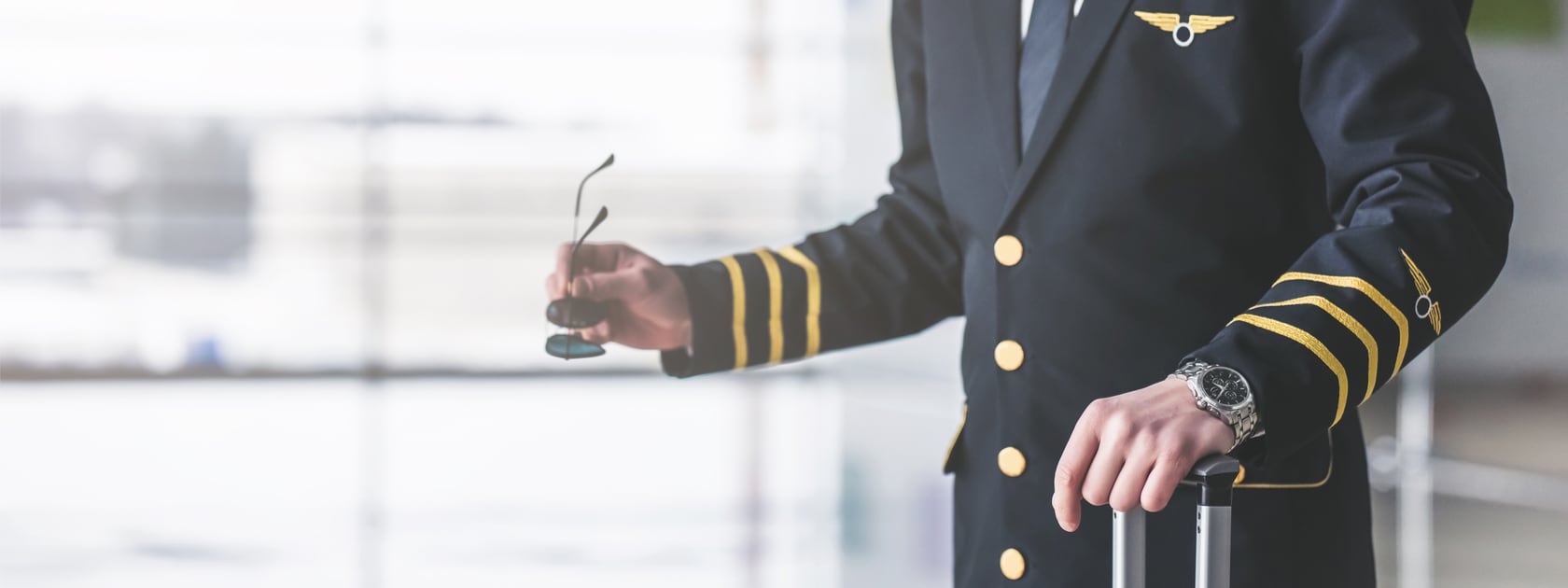
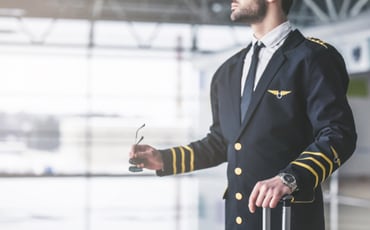 There are many exciting career opportunities in the aviation industry across a number of disciplines, from aviation mechanics and engineering, to airport management and pilot training. Our comparative analysis provides the basic information you’ll need to choose an aviation course in Canada.
There are many exciting career opportunities in the aviation industry across a number of disciplines, from aviation mechanics and engineering, to airport management and pilot training. Our comparative analysis provides the basic information you’ll need to choose an aviation course in Canada.


